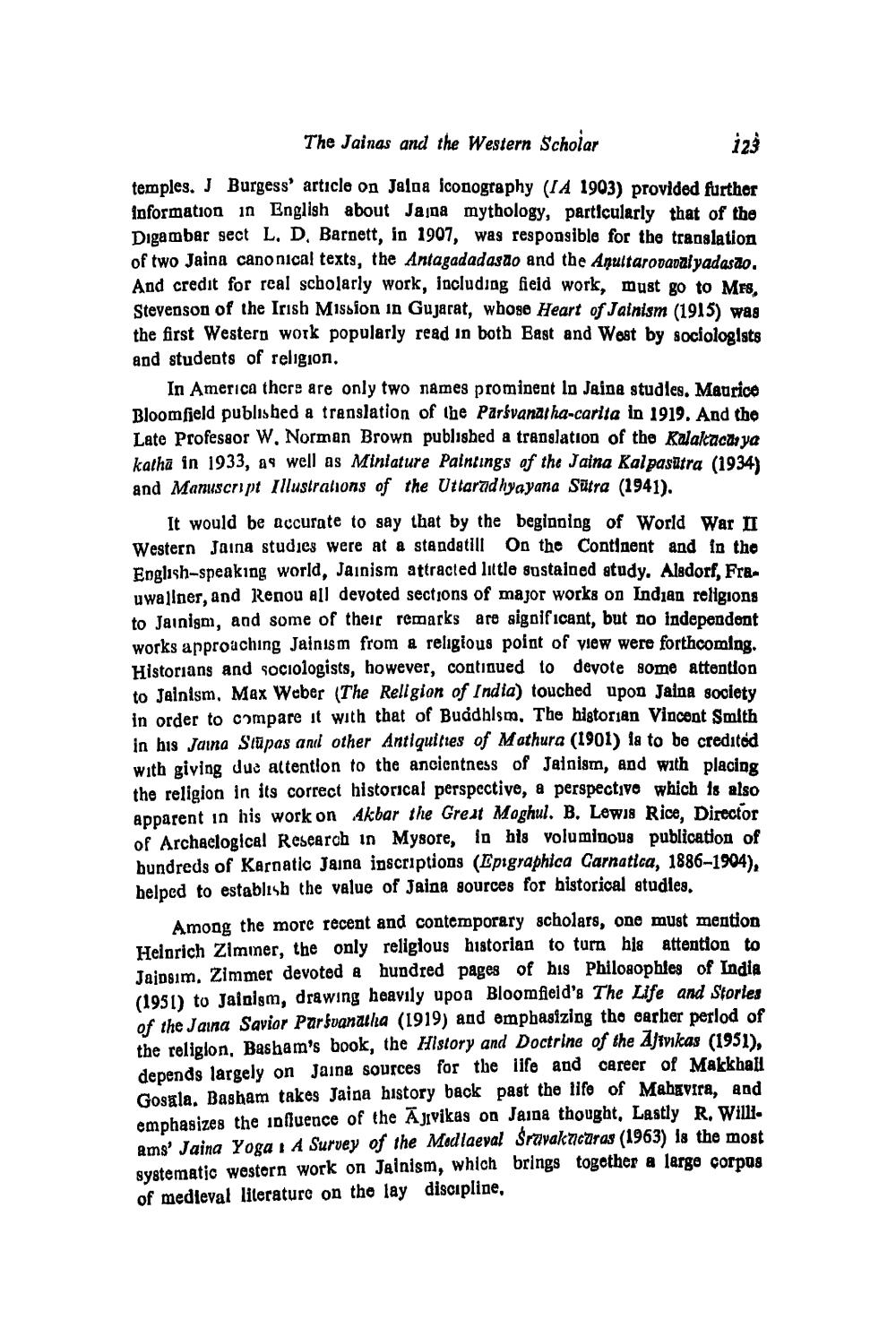________________
The Jainas and the Western Scholar
123
temples. J Burgess' article on Jalna iconography (IA 1903) provided further information in English about Jama mythology, particularly that of the Digambar sect L. D. Barnett, in 1907, was responsible for the translation of two Jaina canonical texts, the Antagadadasão and the Aquitarovavalyadasão. And credit for real scholarly work, including field work, must go to Mrs, Stevenson of the Irish Mission in Gujarat, whose Heart of Jainism (1915) was the first Western work popularly read in both East and West by sociologists and students of religion.
In America there are only two names prominent In Jaina studles. Maurice Bloomfield published a translation of the Parsvanatha-carita in 1919. And the Late Professor W, Norman Brown published a translation of the Kalakaca: ya katha in 1933, as well as Miniature Paintings of the Jaina Kalpasūtra (1934) and Manuscript Illustrations of the Uttaradhyayana Sutra (1941).
It would be accurate to say that by the beginning of World War II Western Jaina studies were at a standstill On the Continent and in the English-speaking world, Jainism attracted little sustained study. Alsdorf, Frauwallner, and Renou all devoted sections of major works on Indian religions to Jainism, and some of their remarks are significant, but no independent works approaching Jainism from a religious point of view were forthcoming. Historians and sociologists, however, continued to devote some attention to Jainism, Max Weber (The Religion of India) touched upon Jaina society in order to compare it with that of Buddhism. The historian Vincent Smith in his Jaina Stupas and other Antiquities of Mathura (1901) ia to be credited with giving due attention to the ancientness of Jainism, and with placing the religion in its correct historical perspective, a perspective which is also apparent in his work on Akbar the Great Moghul. B. Lewis Rice, Director of Archaelogical Research in Mysore, in his voluminous publication of bundreds of Karnatic Jaina inscriptions (Epigraphica Carnatica, 1886-1904), helped to establish the value of Jaina sources for historical studies.
Among the more recent and contemporary scholars, one must mention Heinrich Zimmer, the only religious historian to turn his attention to Jainsim. Zimmer devoted a hundred pages of his Philosophies of India (1951) to Jainism, drawing heavily upon Bloomfield's The Life and Stories of the Jaina Savior Parsvanatha (1919) and emphasizing the earher perlod of the religion, Basham's book, the History and Doctrine of the Aftvikas (1951), depends largely on Jaina sources for the life and career of Makkhall Gosala. Basham takes Jaina history back past the life of Mahavira, and emphasizes the influence of the Ajvikas on Jaina thought, Lastly R. Willi ams' Jaina Yoga A Survey of the Mediaeval Śravakacaras (1963) is the most systematic western work on Jainism, which brings together a large corpus of medieval literature on the lay discipline,




